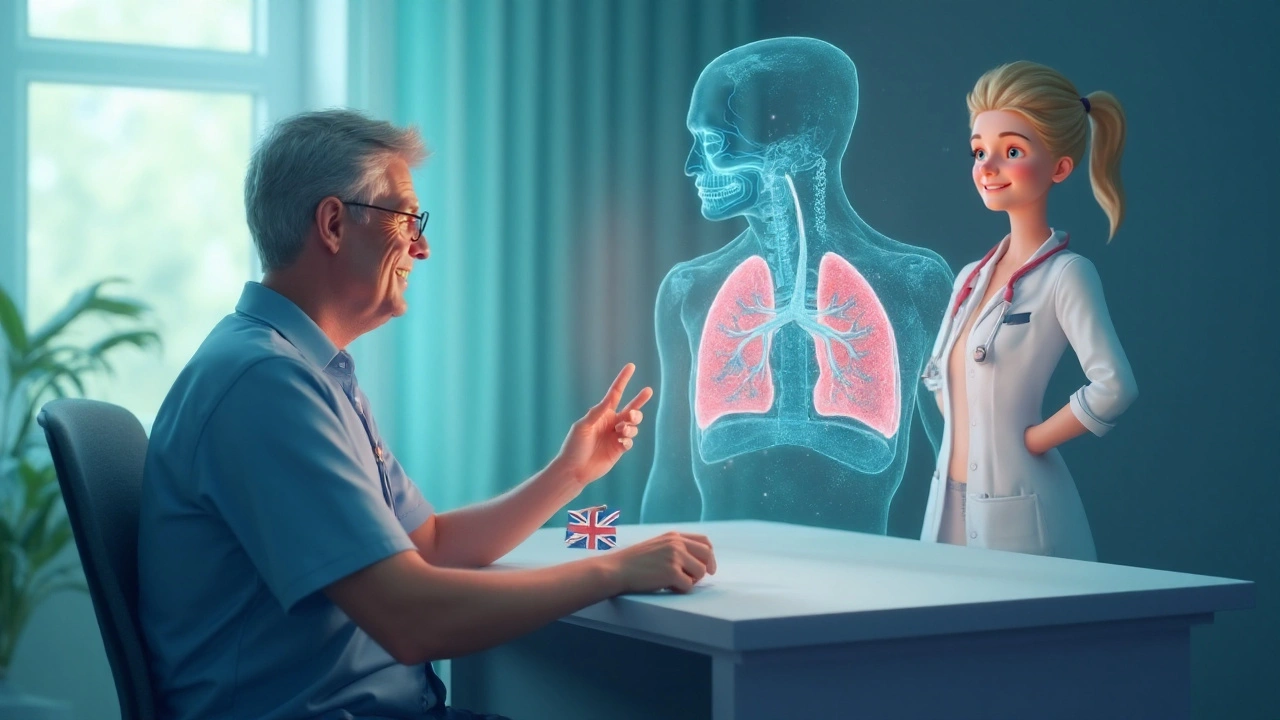Understanding COPD: What It Is and Why It Matters
Ever wonder why some people feel short‑of‑breath after a short walk? That could be COPD, short for chronic obstructive pulmonary disease. It’s a lung condition that makes it harder to move air in and out. Most folks develop it because of smoking, but long‑term exposure to dust, chemicals, or polluted air can also play a part.
Typical Signs You Shouldn’t Ignore
The first clue is usually a persistent cough that brings up mucus. Next comes wheezing – that whistling sound when you breathe. Over time, everyday tasks like climbing stairs or carrying groceries can leave you winded. If you notice chest tightness, frequent lung infections, or a feeling that you can’t get enough air, it’s time to talk to a doctor.
Doctors often use a simple breathing test called spirometry to confirm COPD. The test measures how much air you can blow out and how quickly. It’s quick, painless, and gives a clear picture of lung function.
How to Manage COPD Day‑to‑Day
There’s no cure, but treatment can keep symptoms in check. Inhalers are the most common tools – they deliver medication straight to the lungs to open airways and reduce inflammation. Some people need daily pills or oxygen therapy, especially if blood‑oxygen levels are low.
Beyond meds, lifestyle changes matter a lot. Quitting smoking is the single most effective step; even a small reduction can improve breathing. Exercise may feel tough at first, but gentle activities like walking or stationary cycling build stamina and make lungs more efficient.
Nutrition also helps. A balanced diet rich in fruits, veggies, lean protein, and whole grains supports overall health and keeps weight at a level that’s easier on the lungs. Staying hydrated helps thin mucus, making it easier to clear.
Vaccinations are another practical tip. Flu and pneumonia shots lower the risk of serious infections that can worsen COPD.
When you have an exacerbation – a flare‑up of symptoms – act fast. Increase the use of rescue inhalers as prescribed, call your healthcare provider, and consider a short course of steroids or antibiotics if an infection is suspected.
Finally, keep a simple diary. Note when you feel better or worse, what you ate, and any changes in medication. This record helps you and your doctor spot patterns and adjust treatment before problems grow.
Living with COPD doesn’t mean giving up on the things you love. With the right meds, a smoke‑free lifestyle, regular exercise, and a few smart daily habits, you can breathe easier and stay active.
How COPD and Sinusitis Influence Each Other: A Clear Guide
Explore the link between COPD and sinusitis, how they affect each other, shared mechanisms, diagnosis tips, and combined treatment strategies in plain language.
